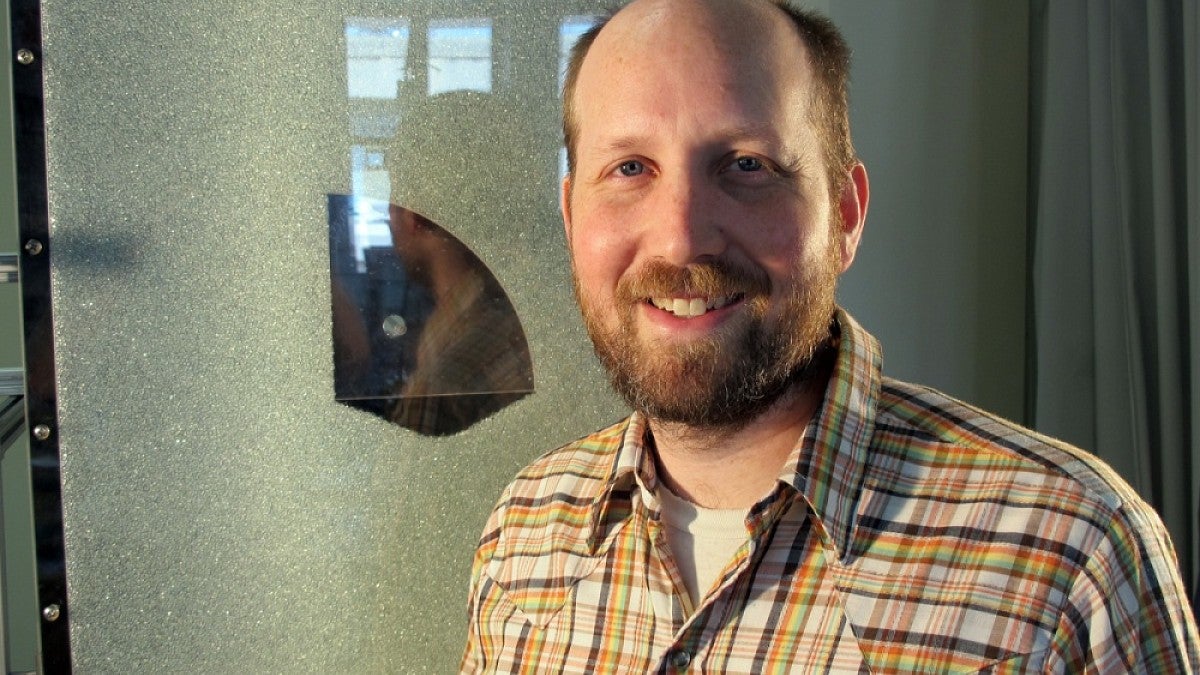Solids are rigid. Liquids flow. With a strong microscope, you can see why. The atoms in solids are arranged in tight crystals. Those in liquids have no order and can easily slip past one another.
So what is glass? It behaves like a solid but its atoms are totally disordered, like a fluid. What then, at a microscopic level, defines a solid?
RELATED LINKS
A new initiative — "Cracking the Glass Problem" — announced by the New York City-based Simons Foundation is pursuing these questions, and the UO's Eric Corwin has a role. The four- to seven-year project will study the transition from liquid to solid as temperature changes in glasses and other materials.
Corwin, assistant professor of physics, is one of six U.S. scientists on the 13-member international team. Sidney R. Nagel of the University of Chicago heads the project. Corwin studies the material properties of jamming, a process that is directly applicable to what happens to glass.
"The study of jammed systems began as a culinary curiosity in 1727, when the Rev. Stephen Hales (in England) studied how peas pack when compressed in an iron pot," Corwin said. "Fill a pot with peas and you can run your hand through them. This is because they can flow out of the way much as a liquid would. As pressure is exerted and their density increases, the peas eventually jam into a stable but disorganized solid.
"We understand the universe now so much better than Hales did in 1727, yet we still don't have a robust understanding of why things jam the way that they do nor how glasses form," he added.
Corwin uses supercomputing and mathematical models to capture insights about what happens when objects moving freely jam to a standstill. He focuses on their geometric structures as materials transition in and out of a jammed state.
"This behavior is very general," Corwin said. "Understanding these transitions could lead to new ways of controlling, designing and processing new materials. Picture cars molded out of metallic glasses, optical band-gap materials to replace electronic computer chips and improved coating materials for delivering time-release medications."
The project's overarching goal is to develop a unified theory of structure and excitations in glassy matter and a theory for relaxation dynamics involved in glass transition.
—By Jim Barlow, University Communications


